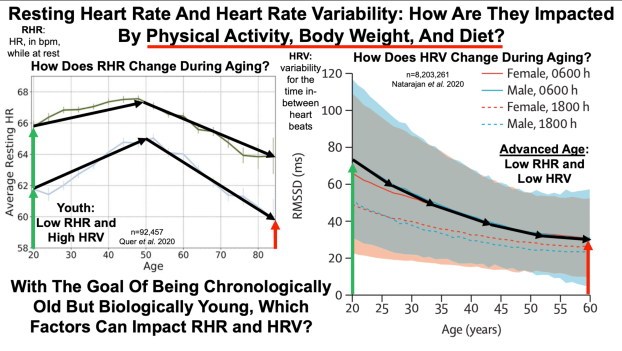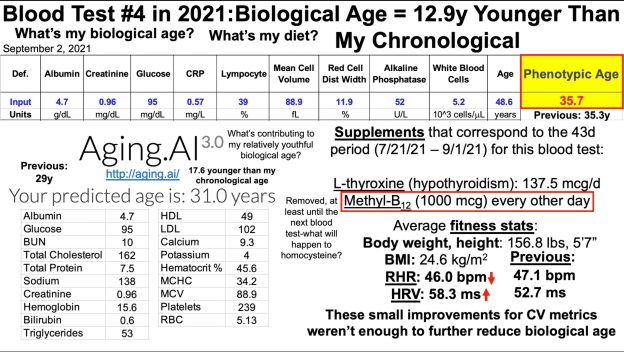Although many of my posts aimed at improving health and longevity are focused on diet, in this post I’ll show data that demonstrates that I’ve been able to steadily improve my cardiovascualr fitness. In earlier posts I reported that a resting heart rate (RHR) of 40 beats per minute (bpm) was associated with lowest risk for all-cause mortality (https://michaellustgarten.wordpress.com/2019/02/02/resting-heart-rate-whats-optimal/), and I noted my own RHR progress in a year-over-year update, from values of 51.5 – 52.7 bpm in August – Sept 2018 to 49.3 – 48.7 bpm during the same months in 2019 (see https://michaellustgarten.wordpress.com/2019/10/08/resting-heart-rate-year-over-year-update/). Have I continued to make progress?
Shown below are 2 more months of RHR data, from August – November 2018, and the data for those months in 2019:
 From August – November 2018, I reduced my RHR from ~52 to 50 bpm, whereas in 2019, I made smaller progress, but the trend is still downward, from 49 to 48 bpm. The 2018 data is significantly different from the 2019 data, as assessed by single-factor ANOVA (p = 8E-14).
From August – November 2018, I reduced my RHR from ~52 to 50 bpm, whereas in 2019, I made smaller progress, but the trend is still downward, from 49 to 48 bpm. The 2018 data is significantly different from the 2019 data, as assessed by single-factor ANOVA (p = 8E-14).
Adding strength to these findings is that my heart rate variability (HRV), as a second index of cardiovascular health, has increased during the same period:
 Note that from August – November 2018, my average daily HRV value never topped 48, whereas during the same 4 months in 2019, it was never lower than 52.1, with my best ever HRV values found in November. The 2018 is significantly different when compared with 2019, again based on single-factor ANOVA (p = 5.2E-13).
Note that from August – November 2018, my average daily HRV value never topped 48, whereas during the same 4 months in 2019, it was never lower than 52.1, with my best ever HRV values found in November. The 2018 is significantly different when compared with 2019, again based on single-factor ANOVA (p = 5.2E-13).
How am I improving my cardiovascular fitness? That’s a topic for another post, but note that my strength is still pretty good, as evidenced by my 12 pull-ups in the video below!
https://www.youtube.com/watch?v=dLktQvFz70Q
If you’re interested, have a look at my book!










 From August – November 2018, I reduced my RHR from ~52 to 50 bpm, whereas in 2019, I made smaller progress, but the trend is still downward, from 49 to 48 bpm. The 2018 data is significantly different from the 2019 data, as assessed by single-factor ANOVA (p = 8E-14).
From August – November 2018, I reduced my RHR from ~52 to 50 bpm, whereas in 2019, I made smaller progress, but the trend is still downward, from 49 to 48 bpm. The 2018 data is significantly different from the 2019 data, as assessed by single-factor ANOVA (p = 8E-14). Note that from August – November 2018, my average daily HRV value never topped 48, whereas during the same 4 months in 2019, it was never lower than 52.1, with my best ever HRV values found in November. The 2018 is significantly different when compared with 2019, again based on single-factor ANOVA (p = 5.2E-13).
Note that from August – November 2018, my average daily HRV value never topped 48, whereas during the same 4 months in 2019, it was never lower than 52.1, with my best ever HRV values found in November. The 2018 is significantly different when compared with 2019, again based on single-factor ANOVA (p = 5.2E-13).